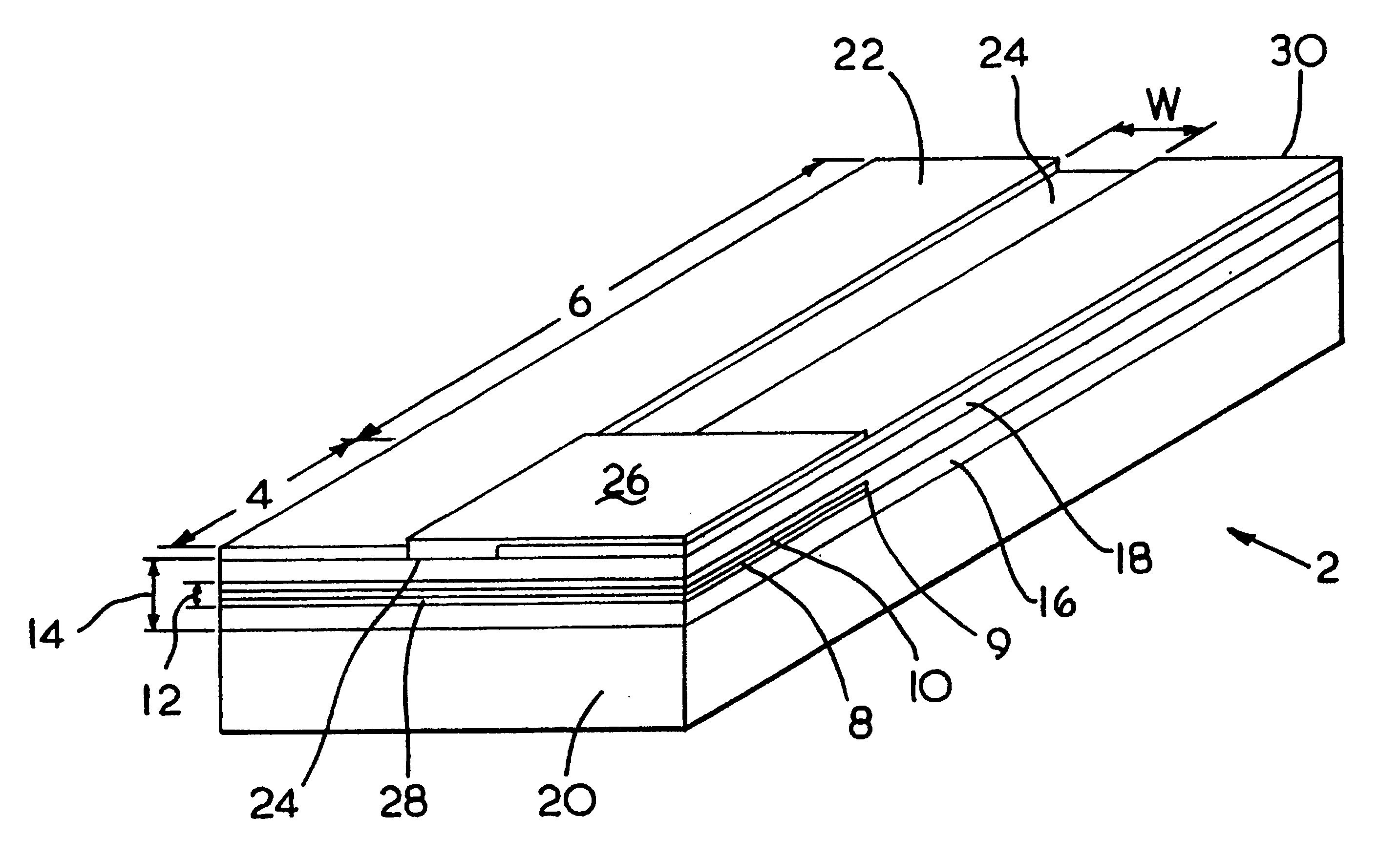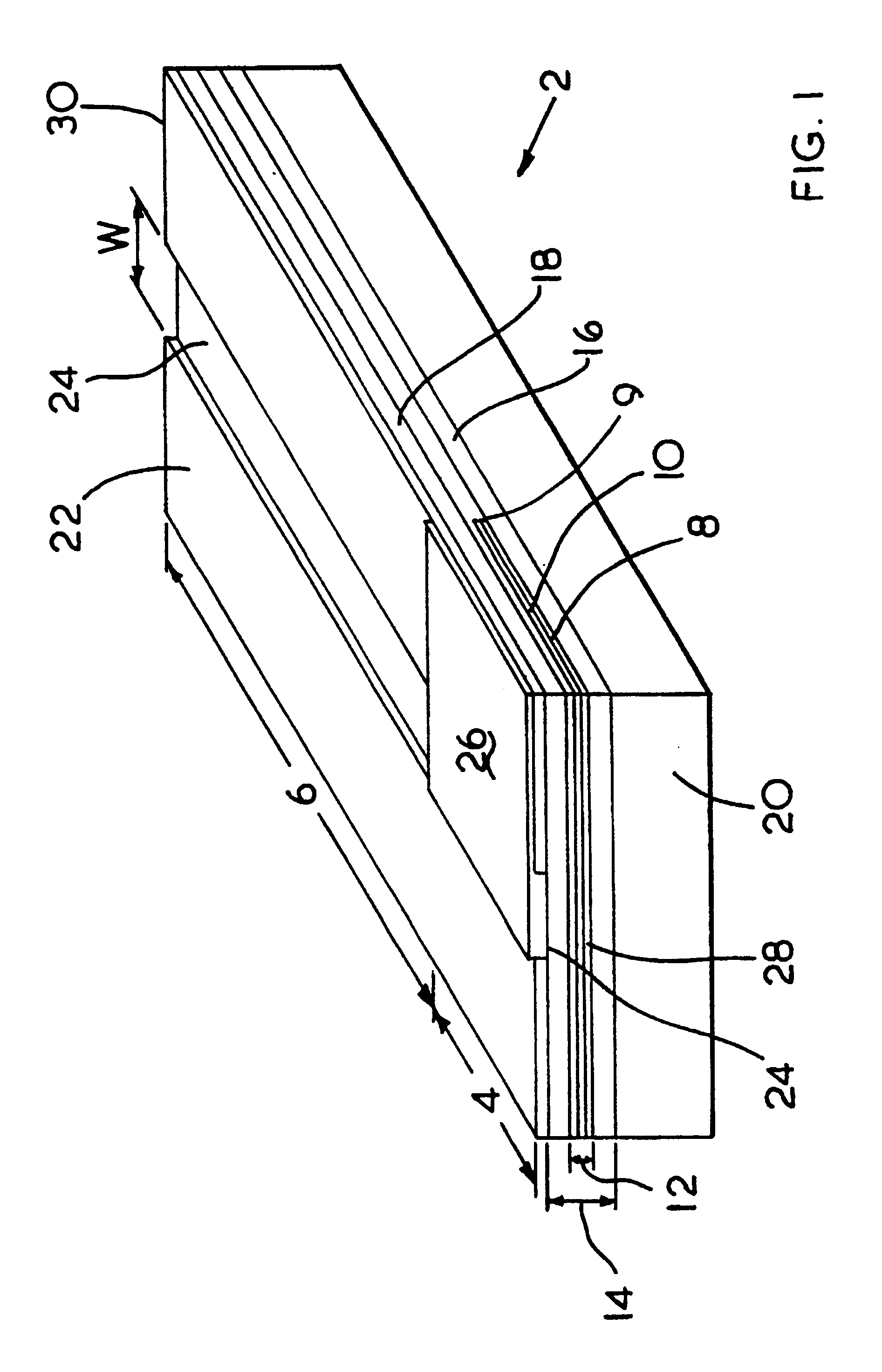Electro-optic semiconductor devices and method for making the same
a semiconductor and optical technology, applied in the field of electro-optic semiconductor devices, can solve the problems of high input power requirements, high complexity and cost, and diffuse material can change the properties of the surrounding crystal growth layer,
- Summary
- Abstract
- Description
- Claims
- Application Information
AI Technical Summary
Benefits of technology
Problems solved by technology
Method used
Image
Examples
Embodiment Construction
Referring first to FIG. 1, there is shown a monolithic extended cavity laser (2) comprising an active laser region (4) and a passive waveguide region (6). The active laser region (4) is formed by the selective growth of a two quantum well layers (8,10) in a core (12) of a waveguide (14). The two quantum well layers (8,10) form the narrow bandgap semiconductor material required for lasing action.
The quantum well layers (8,10) are each formed from a 100 A (100 Angstrom) thick layer of Gallium Arsenide (GaAs). The quantum well layers are grown within a layer of undoped Aluminium Gallium Arsenide (AlGaAs) comprising 20% Aluminium. The layer of 20% AlGaAs forms the core (12) of a waveguide (14) which extends through the active laser region (4) and passive waveguide region (6) of the extended cavity laser (2). The lower boundary or cladding layer (16) of the waveguide (14) is formed from a layer of n-type doped AlGaAs comprising 40% Aluminium which has a higher refractive index than the 2...
PUM
 Login to View More
Login to View More Abstract
Description
Claims
Application Information
 Login to View More
Login to View More - R&D
- Intellectual Property
- Life Sciences
- Materials
- Tech Scout
- Unparalleled Data Quality
- Higher Quality Content
- 60% Fewer Hallucinations
Browse by: Latest US Patents, China's latest patents, Technical Efficacy Thesaurus, Application Domain, Technology Topic, Popular Technical Reports.
© 2025 PatSnap. All rights reserved.Legal|Privacy policy|Modern Slavery Act Transparency Statement|Sitemap|About US| Contact US: help@patsnap.com



